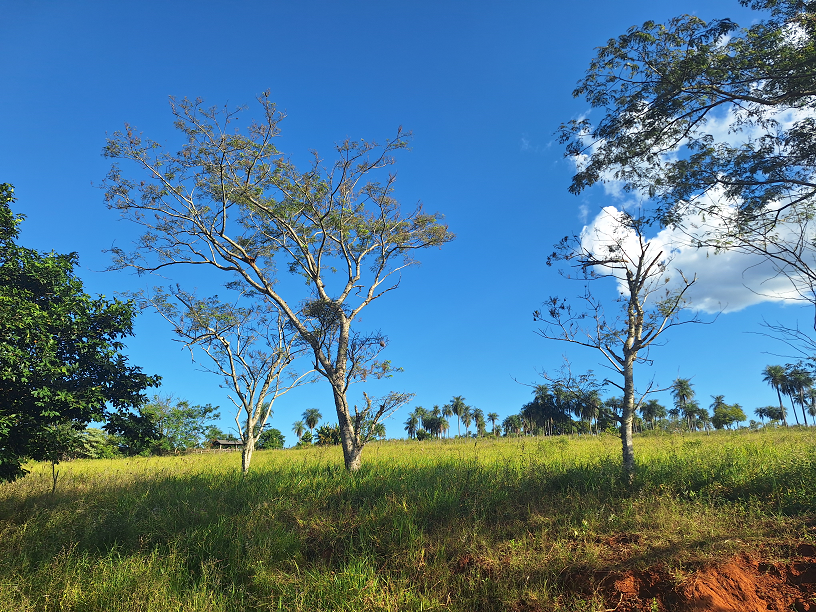Although Paraguay is warm for most of the year it is during the summer that the heat becomes the most extreme.
The summer months here run from December to February. It is no coincidence that the schools have their long summer holiday over those months.
Exactly how hot the summer is and what in the way of storms it brings varies from year to year, but even on a slightly less hot year temperatures will climb from time to time above 40 C.
It is the time of year when much of Paraguay slows to a halt. In addition to all the children being off many professionals take a large parts of January off as a summer holiday. Legal work can be hard to get done at that time of year.
During the summer anyone living in the countryside heads for the cooling waters of a crystal clear stream, or at the very least the shade of a large mango tree.
For city dwellers a weekend at a country park and bathing in it’s stream or river is a must.
Summer is also the time when electricity usage peaks in Paraguay. Air conditioning units run all day and all night. In even the smallest of houses fans turn continuously in an effort to take some of the heat and humidity out of the air.
Although the heat can be as fierce in December as in February summer can be split into three phases.
First from the end of November until Christmas and New Year. This is the time for finishing the school year and putting the final touches to any tasks that need completing before the end of the year. It is a busy time with all the build up to Christmas and New Year as well.
Christmas and New Year are both celebrated at night. A sensible action is such a hot land. There on the patios of houses around Paraguay large barbecues are roasted and many drinks are drunk in celebration.
The Christmas celebrations are for the family whereas New Year is more of a party with groups of friends travelling from house to house and the youngsters often heading out to larger parties in the early hours.
Then once Christmas and New Year are over January is very much the holiday month.
Those that can travel either overseas to the beaches of Brazil and Uruguay or to upmarket Paraguayan resorts such as San Bernardino with it’s lake and night life.
They are however the privileged few as most people either settle for weekends in the countryside, or if already living there seek out a river to bathe in nearby.
I always consider that phase of summer being over after the last of the summer festivals. That is San Blas on the 3rd February. Once that last summer party is over it is time for everyone to head back to work, and for children to think about the approach of the new school year.
This makes February the worst of the summer months. By then the novelty of a bright sun and 40 C of heat has well and truly worn off.
Everyone all across Paraguay waits impatiently for the weather to break and the air to have a slightly more autumnal feel to it.
That always happens at some point during the second half of February. The is no certainty as to when the weather will break. All that is for sure is that by March the heat will be far more pleasant.
This year has been a hot and very dry summer. It remained around 40 C for days on end and the rains didn’t fall. The normal pattern is for the heat to build then every week or two for a storm to freshen the air and bring the temperature down for a couple of days.
However the storms did not come this year. The last was over Christmas. The result was day after day of extreme heat and hot and humid nights.
I spent much of December and January in England and so missed most of the summer. It was though still very hot when I returned to Paraguay in late January.
All the humidity in the air meant it took much longer than normal to adjust from the cold of and English winter to the heat of a Paraguayan summer. It was a couple of weeks before I was fully at ease with all the heat.
Now in mid February is seems that the highest of the temperatures may be over for this year.
A blanket of thick cloud rolled up from Argentina and overnight the temperature dropped 10 C and the humidity vanished.
There are many reasons why Paraguay traps differing amounts of heat from year to year. Global and continental weather patterns are the real drivers. However behind it all the undeniable fact the Paraguay like elsewhere in the world is by incremental steps becoming a hotter place.


Recent Comments